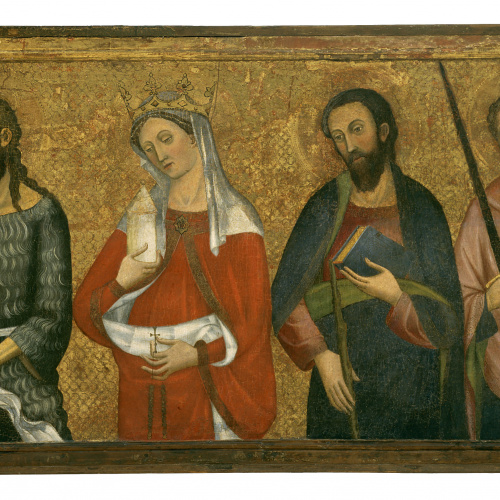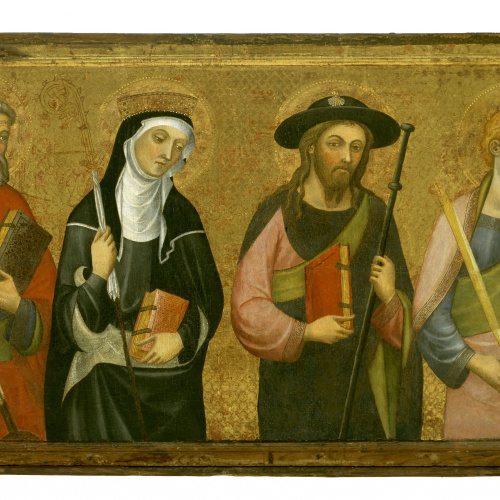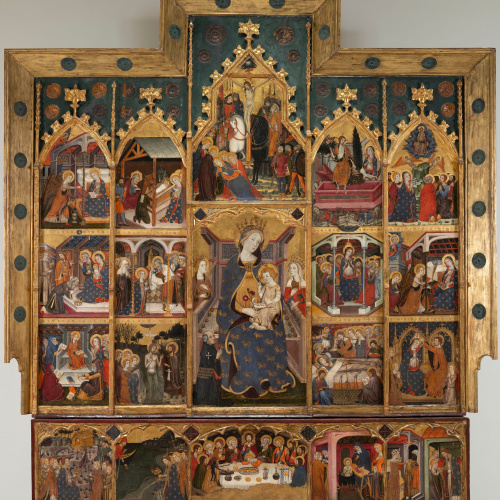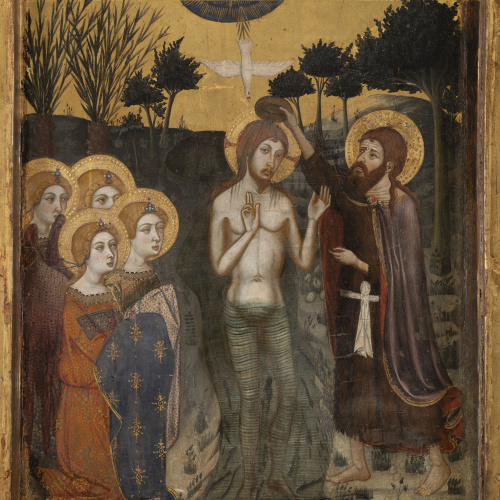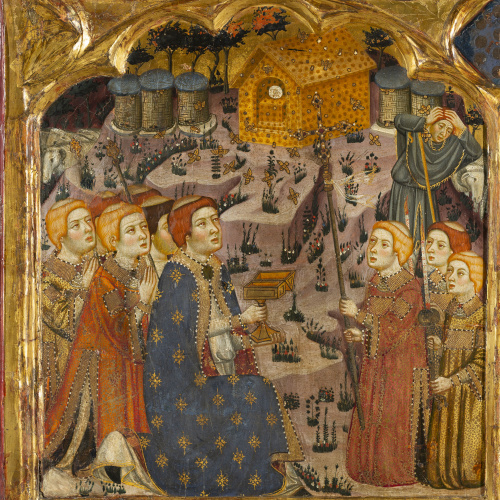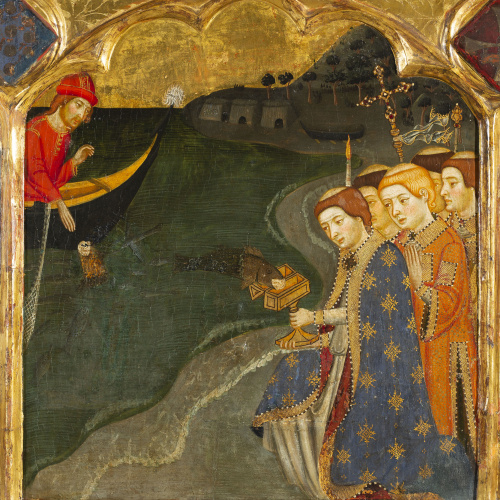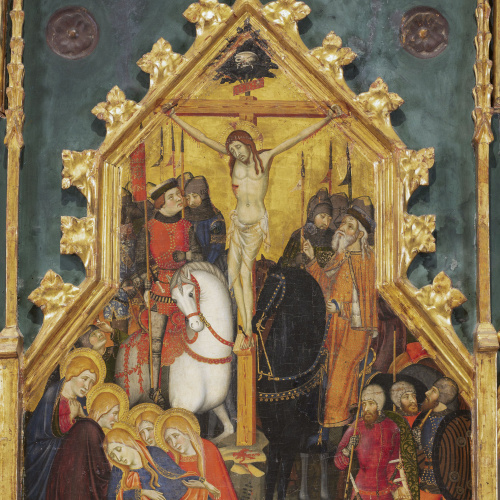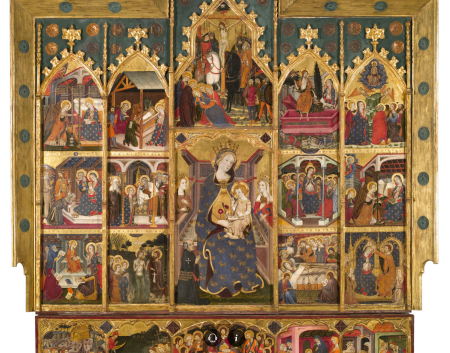We are familiar with much of the physiognomy of the former retable of Sant Pere de Cubells, even though it was disassembled when the new baroque ensemble was built and its constituent parts were dispersed. It was a mixed-media retable: its main body featured a cycle of paintings dedicated to the apostle, which would have closed with this one, and was arranged around a sculpture of the saint, attributed to Pere de Sant Joan (Museu Frederic Marès), a sculptor who hailed from Picardy (France). At the museum we also have a fragment of the predella, that is, the bottom horizontal section of the retable, which was dedicated to the Joys of Virgin.
We are familiar with much of the physiognomy of the former retable of Sant Pere de Cubells, even though it was disassembled when the new baroque ensemble was built and its constituent parts were dispersed. It was a mixed-media retable: its main body featured a cycle of paintings dedicated to the apostle, which would have closed with the Crucifixion of Saint Peter, conserved at the museum, and was arranged around a sculpture of the saint, attributed to Pere de Sant Joan (Museu Frederic Marès), a sculptor who hailed from Picardy (France). This is a fragment of the predella, that is, the bottom horizontal section of the retable, which was dedicated to the Joys of Virgin.
This splendid panel belonged to a retable of large dimensions, other parts of which are yet to be found. It is a rendering of the theme of the Adoration of the Shepherds, who appear kneeling on the left, added to the elements normally associated with the Nativity scene. In the middle of the composition we see the Newborn in a wooden manger, together with the elderly figure of Joseph and the Virgin, who crosses her hands over her breast in an attitude of reverence. Behind her a female figure appears that may be one of the midwives who, according to the apocryphal tradition, assisted her during the birth.
The structure and the theme matter of this panel suggest that it was originally the top compartment of a retable: both its form as a pointed arch and the rendering of Calvary are two of the most common characteristics of this part of Hispanic Gothic ensembles. As usual, the scene features Roman guards, the Holy Woman and John the Evangelist around Christ Crucified. Particularly striking here is the magnificent pelican on the tree that grows from the cross. The pelican is a metaphor of Christ, of the Passion and of the Eucharist, since according to tradition this bird tore out its own flesh to feed its chicks.
It may be that this strikingly decorative panel of high quality, undiscovered until the 1990s, was the central compartment of a retable of modest dimensions. The theme, Our Lady with the Child surrounded by angels, was much cultivated with variations at the Serra brothers' workshop, as other works denote. Beyond Mary's distracted gaze, the image of the Child playing with the flower bud embodies the humanisation of holy figures characteristic of the Gothic world.
This splendid central panel and the two sections of the predella with saints (which must once have flanked a tabernacle) are all that remains of an altarpiece. It was dedicated to the Virgin Mary and was painted for one of the chapels in the ambulatory of Tortosa cathedral, probably towards the 1380s. The compartment with the Virgin and Child surrounded by angels playing music is a very graceful and refined version of an iconographic type that was extremely popular at the time. Pere Serra, author of the altarpiece, came from a family of painters who grew to head the Catalan painting of the second half of the fourteenth century.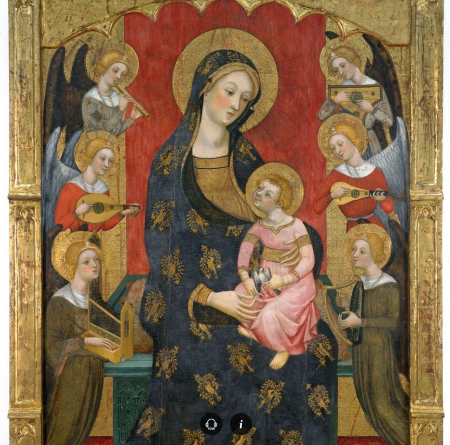









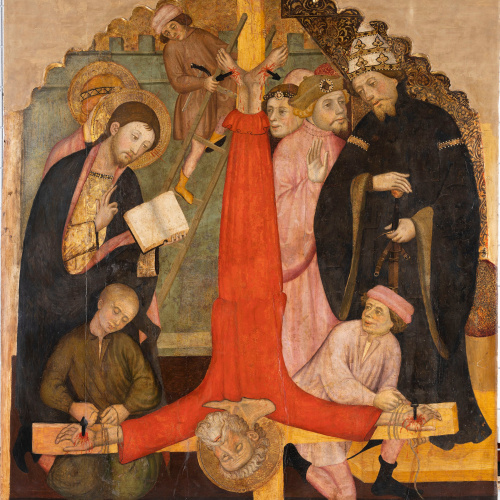
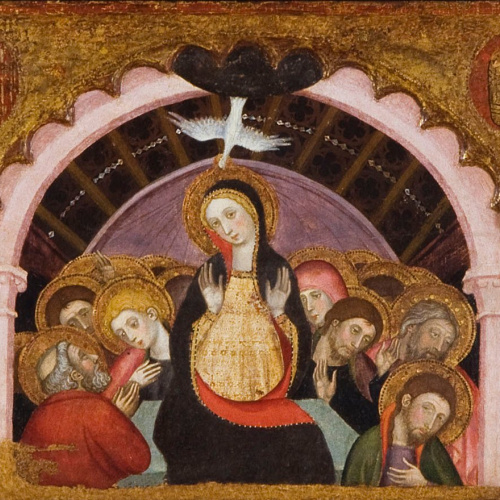
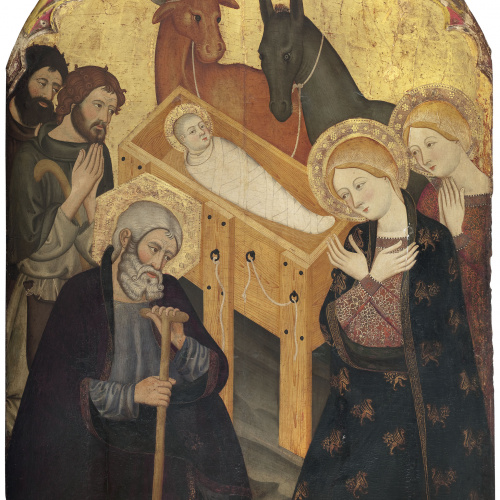
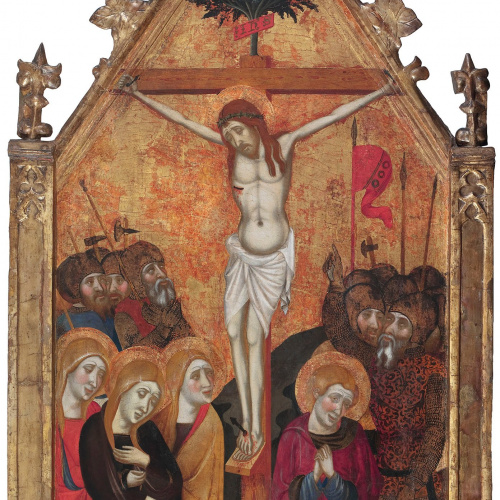
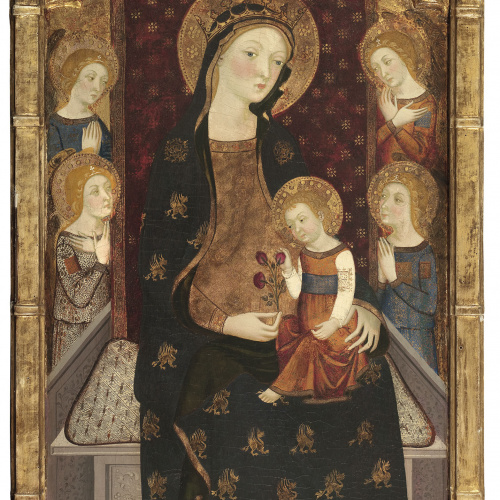
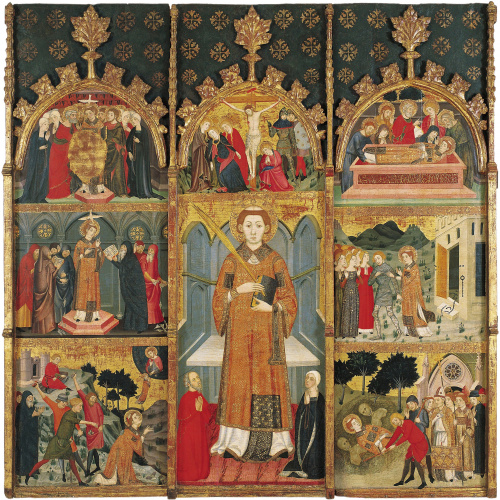
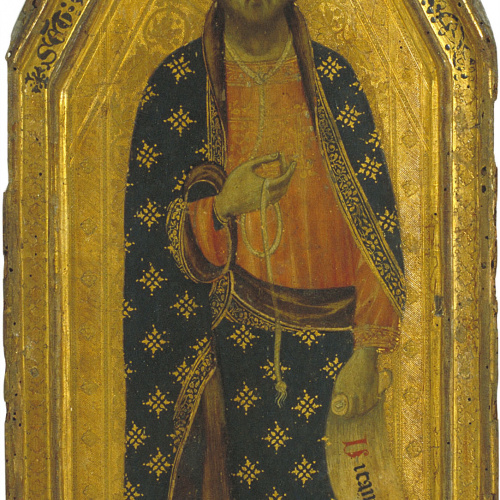
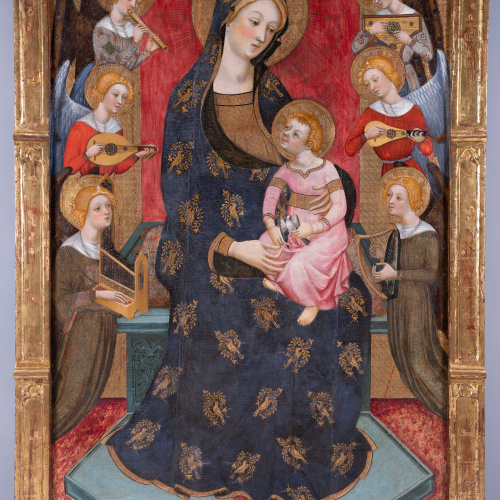
![Pere Serra - Mare de Déu dels Àngels - Cap a 1385 [1] image for: Pere Serra - Mare de Déu dels Àngels - Cap a 1385 [1]](https://www.museunacional.cat/sites/default/files/styles/resize_500x500/public/images/art_piece/first_gallery/38265/003950-000_18419.JPG)
![Pere Serra - Mare de Déu dels Àngels - Cap a 1385 [2] image for: Pere Serra - Mare de Déu dels Àngels - Cap a 1385 [2]](https://www.museunacional.cat/sites/default/files/styles/resize_500x500/public/images/art_piece/first_gallery/38265/003950-000_18426.JPG)
